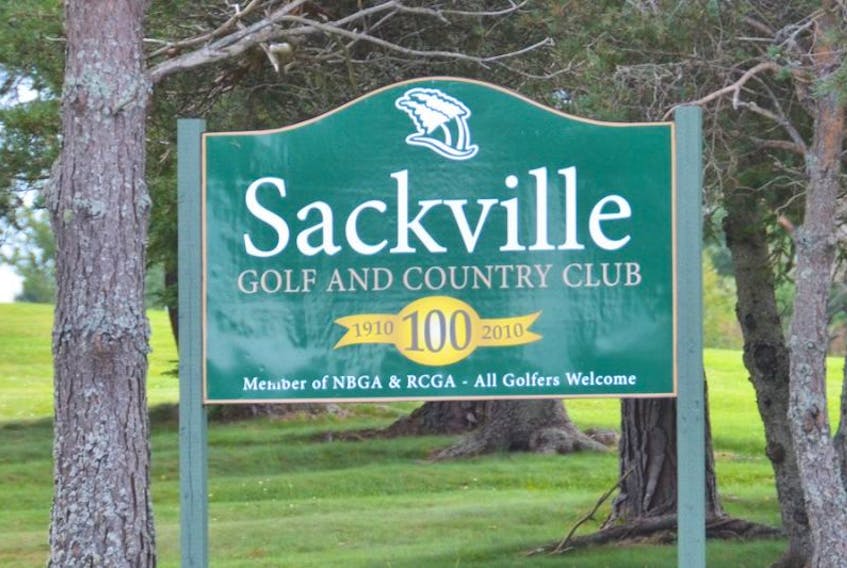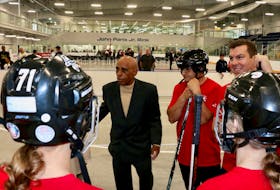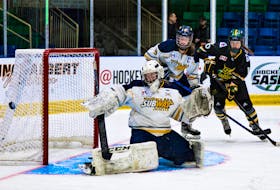There is no doubt the instant stardom earned by Woods in the 1990s and early 2000s sparked a dramatic rise in the number of young people buying clubs and gear and trying the 360-degree swing that the young black man used to rack up one major victory after another.
In a recent Write Call it was explained how the membership at the Sackville Golf Club has shrunk from a high of 300 to around 150 over a period of about five years.
Well, these figures are not all that different from those presented across North America and, ultimately, wherever the game is played.
By any measure, participation in the game is way off, from a high of 30.6 million golfers in the US in 2003 to 24.7 million in 2014.
A recent study would indicate the long-term trends are troubling, with the number of golfers aged 18 to 34 showing a 30-percent drop over a 20-year period. And the slowdown is obvious in TV ratings, rounds played, golf equipment sales and golf courses constructed.
“This is a demographic challenge,” says Chip Brewer, president and CEO of Callaway. “During the boom, most of the 20-somethings who were out hacking every weekend were out there because of one man, Tiger Woods. Golf’s heyday coincided neatly with Tiger’s run of 15 major golf championships between 1997 and 2008.
“When Tiger triple-bogeyed his marriage and seemingly misplaced his swing, the game not only lost its best player, it also lost its leading salesman.”
So, the simple answer to bring the game back to its former level of popularity is to find another Tiger.
But according to a recent golf newsletter you can’t blame one man’s wandering libido for the demise of an entire sport. The challenge golf faces are myriad, from those lacking the attention span for a five hour round to the recent economic crisis.
“Golf is an expensive, inspirational game.” says Brewer, “ and a lot of people today are struggling with debt and jobs – if you don’t have a job, golf doesn’t fit in very well.”
The study says that combining the game’s cost with the fact the game is perceived to be mainly for white males – Augusta National didn’t accept black members until 1990 and women until 2012 – and it suggests no wonder young people are not flocking to it.
For a long time there was a rush to build lush golf courses surrounded by expensive homes to create golf communities. However, especially in Florida, this is a bygone era and in some cases the courses are being turned into housing developments.
A variety of innovative decisions have been made to keep golf clubs afloat. Lowering green fees, two for one, kids play free and groupon deals – not totally unlike what is happing in Sackville – but often the remaining members balked.
Now attempts to save the game include making it faster, cheaper and easier to play – but that is exactly been the situation at the Sackville course. There is no requirement to reserve a tee time – a player can even get in a few holes during lunch break, which meets the challenge of faster – and the cost of membership here is one of the lowest in the region. But in spite of this the SGCC continues to face surprising challenges as fewer and fewer people commit to membership, preferring to play a few rounds a year by paying green fees which are low by any standard.
At the same time as traditional golf is hurting world-wide there are a number of similar games evolving. FootGolf is played with a soccer ball, and Big Hole Golf is where the game is played with cups as wide as 15 inches, and, of course, Frisbee golf. The PGA has introduced Tee It Forward, which encourages players to set their tees well ahead of their normal spot, hoping the game will be speeded up. As a matter of fact, local officials have adopted a system somewhat similar.
The local club has operated successfully for more than 105 years and even though playing membership is down during this period few have any doubt but that it will be still providing recreation and challenges to local folks and visitors long after current players are long gone. However, there is a natural concern that changes will be required if it is to remain viable.
Local club president Jack Drover feels the term “demise” is inappropriate for the aforementioned report and should have read “declining interest”. He believes the priority should be to make golf an enjoyable experience and says steps have been taken locally to meet that goal.
“Golf is a business,” Drover told The Write Call, “and if expenses exceed revenue the end result is obvious.”
There is no doubt the instant stardom earned by Woods in the 1990s and early 2000s sparked a dramatic rise in the number of young people buying clubs and gear and trying the 360-degree swing that the young black man used to rack up one major victory after another.
In a recent Write Call it was explained how the membership at the Sackville Golf Club has shrunk from a high of 300 to around 150 over a period of about five years.
Well, these figures are not all that different from those presented across North America and, ultimately, wherever the game is played.
By any measure, participation in the game is way off, from a high of 30.6 million golfers in the US in 2003 to 24.7 million in 2014.
A recent study would indicate the long-term trends are troubling, with the number of golfers aged 18 to 34 showing a 30-percent drop over a 20-year period. And the slowdown is obvious in TV ratings, rounds played, golf equipment sales and golf courses constructed.
“This is a demographic challenge,” says Chip Brewer, president and CEO of Callaway. “During the boom, most of the 20-somethings who were out hacking every weekend were out there because of one man, Tiger Woods. Golf’s heyday coincided neatly with Tiger’s run of 15 major golf championships between 1997 and 2008.
“When Tiger triple-bogeyed his marriage and seemingly misplaced his swing, the game not only lost its best player, it also lost its leading salesman.”
So, the simple answer to bring the game back to its former level of popularity is to find another Tiger.
But according to a recent golf newsletter you can’t blame one man’s wandering libido for the demise of an entire sport. The challenge golf faces are myriad, from those lacking the attention span for a five hour round to the recent economic crisis.
“Golf is an expensive, inspirational game.” says Brewer, “ and a lot of people today are struggling with debt and jobs – if you don’t have a job, golf doesn’t fit in very well.”
The study says that combining the game’s cost with the fact the game is perceived to be mainly for white males – Augusta National didn’t accept black members until 1990 and women until 2012 – and it suggests no wonder young people are not flocking to it.
For a long time there was a rush to build lush golf courses surrounded by expensive homes to create golf communities. However, especially in Florida, this is a bygone era and in some cases the courses are being turned into housing developments.
A variety of innovative decisions have been made to keep golf clubs afloat. Lowering green fees, two for one, kids play free and groupon deals – not totally unlike what is happing in Sackville – but often the remaining members balked.
Now attempts to save the game include making it faster, cheaper and easier to play – but that is exactly been the situation at the Sackville course. There is no requirement to reserve a tee time – a player can even get in a few holes during lunch break, which meets the challenge of faster – and the cost of membership here is one of the lowest in the region. But in spite of this the SGCC continues to face surprising challenges as fewer and fewer people commit to membership, preferring to play a few rounds a year by paying green fees which are low by any standard.
At the same time as traditional golf is hurting world-wide there are a number of similar games evolving. FootGolf is played with a soccer ball, and Big Hole Golf is where the game is played with cups as wide as 15 inches, and, of course, Frisbee golf. The PGA has introduced Tee It Forward, which encourages players to set their tees well ahead of their normal spot, hoping the game will be speeded up. As a matter of fact, local officials have adopted a system somewhat similar.
The local club has operated successfully for more than 105 years and even though playing membership is down during this period few have any doubt but that it will be still providing recreation and challenges to local folks and visitors long after current players are long gone. However, there is a natural concern that changes will be required if it is to remain viable.
Local club president Jack Drover feels the term “demise” is inappropriate for the aforementioned report and should have read “declining interest”. He believes the priority should be to make golf an enjoyable experience and says steps have been taken locally to meet that goal.
“Golf is a business,” Drover told The Write Call, “and if expenses exceed revenue the end result is obvious.”









